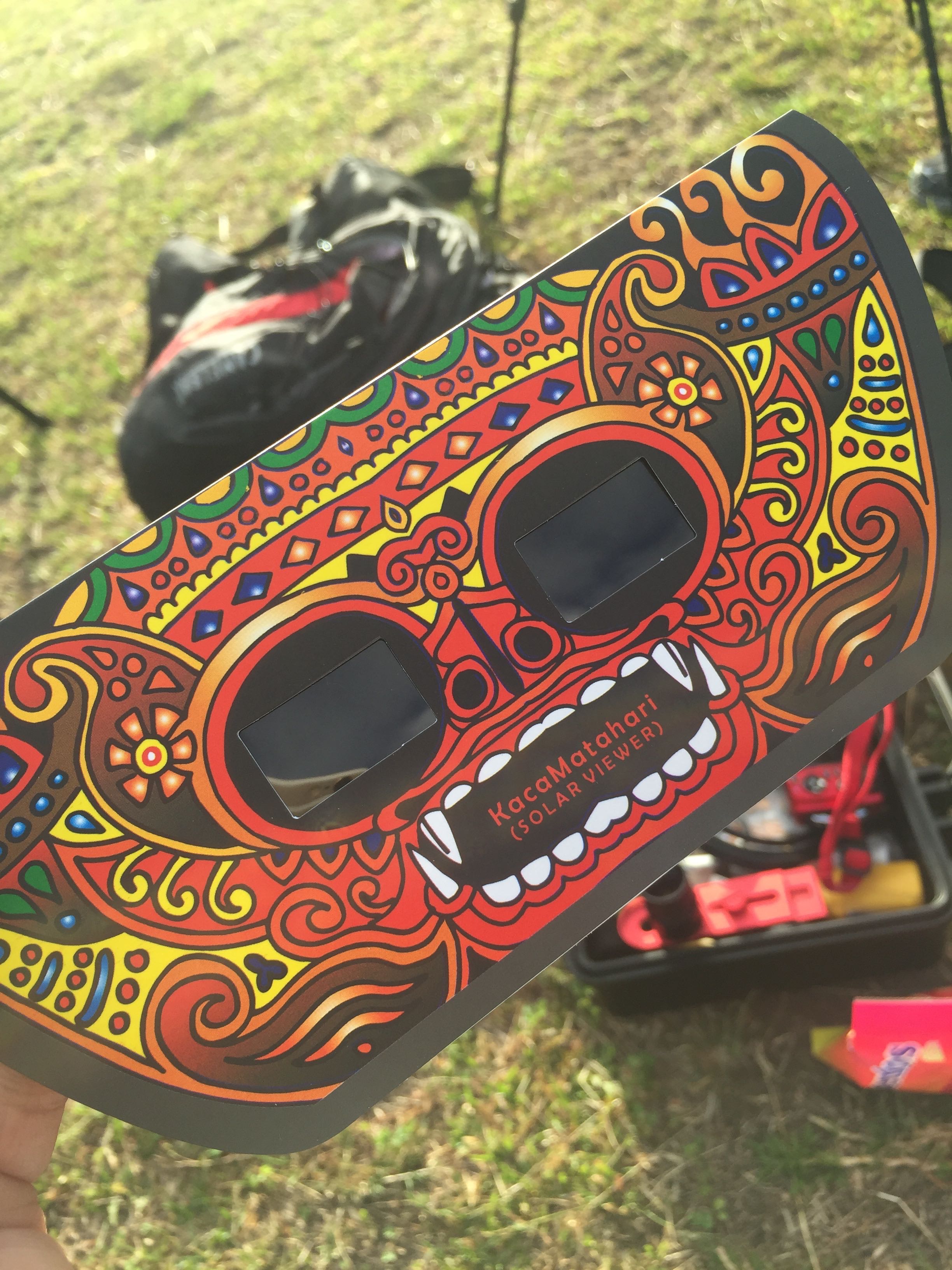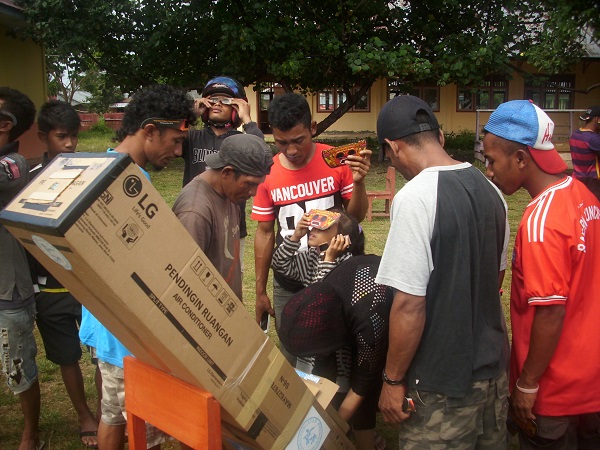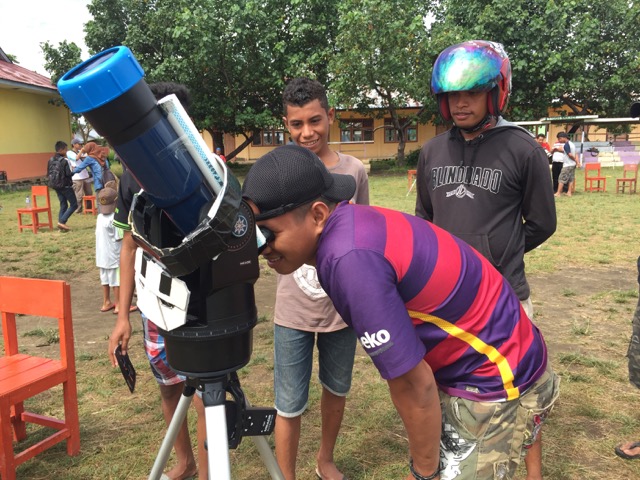By Avivah Yamani
 Photo Credit: langitselatan
Photo Credit: langitselatan
March 9th, 2016, was a special day for Indonesia as it was the day of Total Solar Eclipse. It is special as the last TSE was in 1995, and most of the people don’t really remember the event. Prior to 1995, there were 3 other total solar eclipses with totality path crossing some places in Indonesia. The first and most memorable for public was the 1983 TSE. It was famous because at that time, the government banned people from viewing the eclipse using any eclipse glasses or telescopes with filter.
Indonesia is a big country with more than 17 thousand islands. Therefore, it’s a challenge for astronomers to share information about the eclipse with the whole country. And it was a little bit late when we started to prepare the eclipse in 2015. By the time we started, most accommodation had been booked by eclipse chasers and tourist. But nonetheless, better late then never.
The national committee of Total Solar Eclipse was formed April last year lead by the National Institute of Aeronautics and Space. The idea was to coordinate all the groups who will conduct TSE observation in many areas. Aside from that, the national committee also helps to coordinate the research, educational aspect and also tourism. As for tourism, the Tourism Ministry is really active in coordinating cultural events in each city which experience the totality. So by the time of Total Solar Eclipse, tourists were not only observing the eclipse but they also had a chance to experience the cultural events in each observation site. Every site has different kind of events but most of them held cultural performance and traditional culinary exhibitions. The Indonesia post office also releases a series of eclipse stamps and coin.
The Total Solar Eclipse raised the Indonesian people’s curiosity about astronomy, and was a challenge for astronomers to communicate this event to the whole country. But since Indonesia is one of the most social media users, the easiest way to reach the public was online media and to share everything through social media.
In Indonesia, I work as astronomy communicator in langitselatan, an online media dedicated to communicate and educate public in astronomy. As we realized the need for information on the Total Solar Eclipse, we started to build a special website to share the event. We chose gerhana.info as its name. Gerhana means eclipse in Indonesia language.
 Photo Credit: langitselatan
Photo Credit: langitselatan
We provide information in Indonesian and in English as we also realize that international public who wants to observe in Indonesia will need information about destinations and how to get there. So the site covered everything from astronomy information about the eclipse to tourism information.
In addition to the eclipse website, langitselatan also conducted a trip to North Maluku and we decide to observe the eclipse from Maba, East Halmahera, in North Maluku province. This is the place where we can observe the longest duration of totality in Indonesia. Maba, located in east part of Indonesia where information about astronomy is very limited. So, total solar eclipse is a great opportunity for astronomer to introduce astronomy, not only in Maba but also in all places across Indonesia.
We also collaborated with the local schools to do outreach. We conduct short workshop with secondary schools’ teachers and students in Maba and the surrounding area and introduce them to astronomy and teach them how to do safe observation. We also conduct a session to build pinhole projector and another short session for You Are Galileo Telescope. We taught them how to build and use the telescope as each school received one You Are Galileo telescope that they can use in the future to observe the sky. We also provided eclipse glasses for public.
At the day of Total Solar Eclipse, we conducted the observation with public. And …. it was cloudy and after first contact, it rained! After that, the sun plays hide and seek with us. But at the time of totality, as the darkness comes for 3 minutes and 20 seconds, we could feel the change in temperature and the sounds of the insect. It was like the night came and it was time to sleep. Public reaction was priceless.
 Photo credit: langitselatan
Photo credit: langitselatan
The totality is over now. But it was the first time, astronomy became the main subject in national media and live coverage by national television. And it was also for the very first time we realized that, we have lack of astronomers, as no one was left for the media live coverage in the studio.
 Avivah Yamani is an astronomy communicator from Indonesia. She is a co-founder of langitselatan, an astronomy online media and a Project Director of 365 Days of Astronomy.
Avivah Yamani is an astronomy communicator from Indonesia. She is a co-founder of langitselatan, an astronomy online media and a Project Director of 365 Days of Astronomy.







